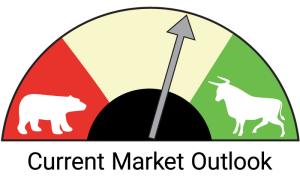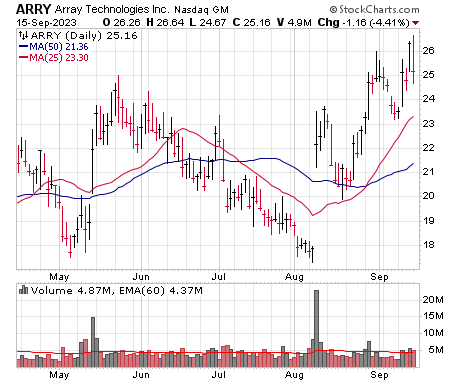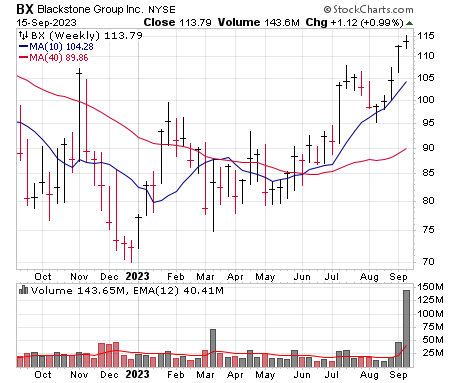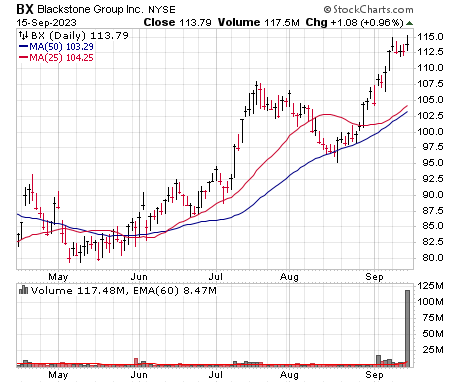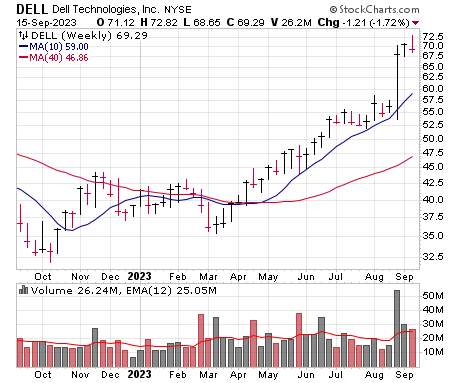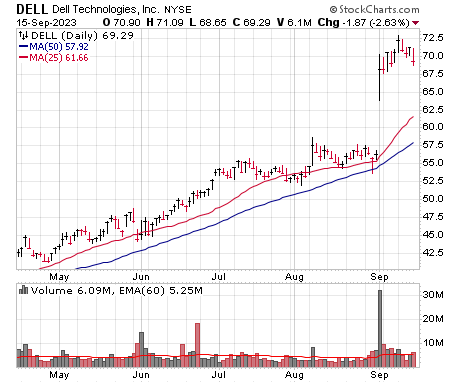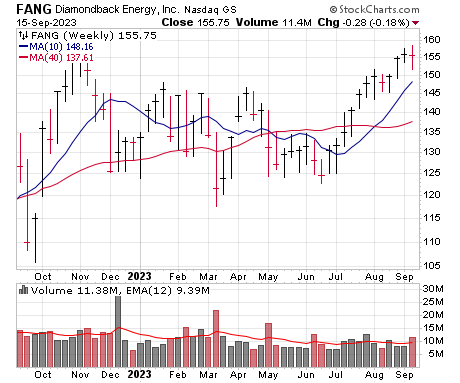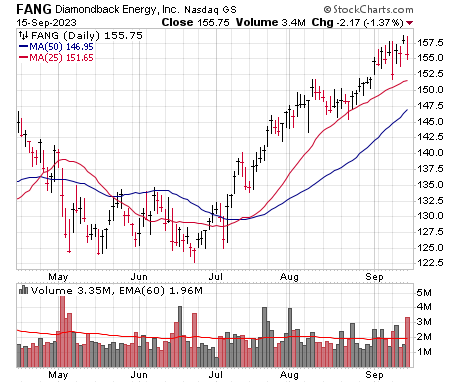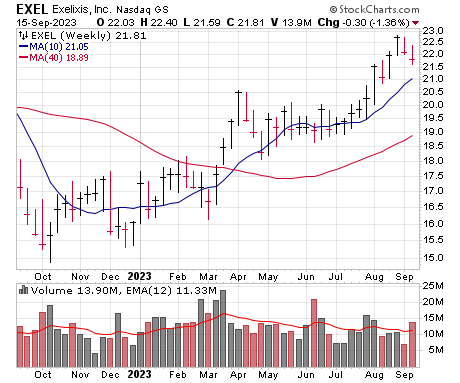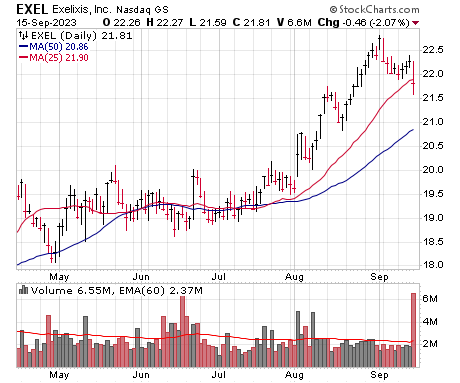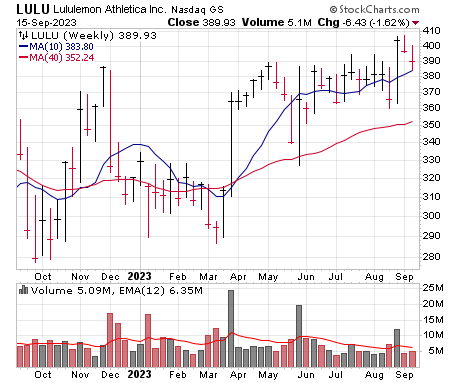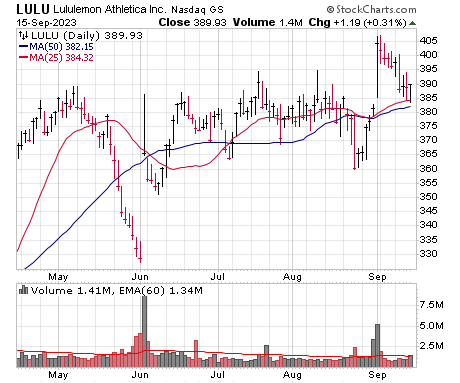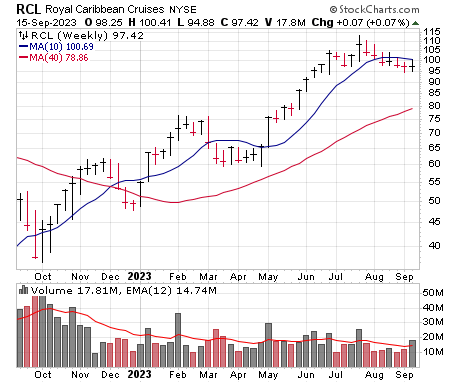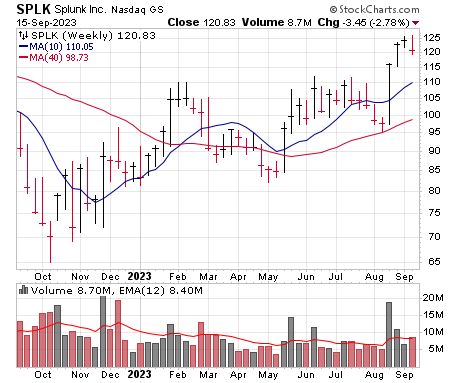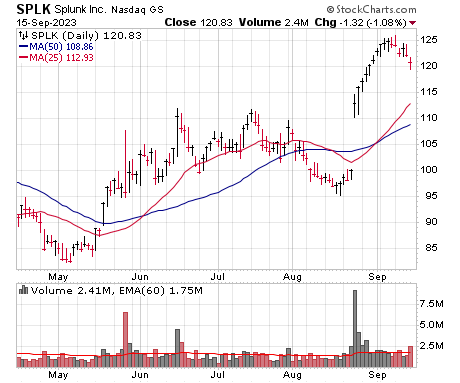Still in the Muck
Stocks chopped up and then down last week with relatively minor changes in the major indexes and a bit more weakness among the resilient growth stock crowd than most other areas. All told, not much has changed—the market is still in the throes of a two-month correction, with a sideways-to-down intermediate-term trend and few stocks moving in a sustained way on the upside. Said another way: While there are a decent number of potential setups out there (we have many today, including some potential resumption patters), there’s little money being made right now, with far more stocks, sectors and indexes thrashing around in the muck than acting well. That doesn’t mean we’re in the storm cellar—we’re OK having a few lines in the water and starting some small positions in potential leaders as the odds favor the next big market move being up. But overall, a cautious stance is warranted given the evidence, especially as late September is usually a rough ride. We’ll leave our Market Monitor at a level 6.
This week’s list has something for everyone, with a variety of sectors and setups represented. Our Top Pick is Dell Technologies (DELL), which is a cheap, strong stock with an AI infrastructure angle. Given the market, try to buy on weakness.
Price |
| Array Technologies (ARRY) |
| Blackstone (BX) |
| Celestica (CLS) |
| Dell Technologies (DELL) ★ Top Pick ★ |
| Diamondback Energy (FANG) |
| Exelixis (EXEL) |
| Lululemon (LULU) |
| Royal Caribbean (RCL) |
| ServiceNow (NOW) |
| Splunk (SPLK) |
Stock 1
Array Technologies (ARRY)
Price |
Why the Strength
Array makes solar trackers, the underlying structures that “hold” the panels and are able to move them gradually during the day so that they’re always receiving maximum sunlight. Utility-scale solar farms can generate up to 25% more power using a tracker compared to having panels fixed at one angle, which is the reason why, even though trackers add about 7% to the upfront cost of a solar farm, Array has a big and growing business. When the firm went public three years ago, it was quickly gaining market share by having fewer motors moving more panels, giving it a cost and maintenance edge over larger competitors. Now it has the size advantage, too, as last year Array became the largest solar tracker maker in the world with the acquisition of Spain’s STI Norland. The combined business posted revenue gains of 21% in the second quarter ended June 30, to $508 million. Now with business largely back to normal after pandemic supply hiccups, Array is likely to benefit in a big way from last year’s green energy bill, which is starting the process of distributing the billions of dollars set aside for U.S. renewable energy projects. The company just signed a deal with Steel Dynamics to source American-made steel so it meets the bill’s requirements that at least 85% of components be U.S.-made. Importantly, management said the second quarter pulled in $600 million of orders with another $320 million of probable orders lined up should they be approved for subsidies by Uncle Sam. While the wait for guidance on those payments is holding back orders a bit, 2023 sales should rise about 4% to $1.7 billion, but earnings per share should nearly triple, to $1.04, with improving gross margins. And next year should see a gush of business, with sales lifting north of 30% as the delayed orders are filled, while earnings take another leap higher. It’s a solid solar story.
Technical Analysis
ARRY came public in October 2020 at 22 and hit highs near 55 before pandemic-related steel price spikes spooked investors, driving shares toward 5 in May last year. After a nice late-2022 recovery, ARRY has been mostly rangebound between 15 and 24 for months, but it may be changing character—shares soared on earnings in early August and pushed up to its resistance area before pulling back in recent days. We’ll set our buy range down a bit, thinking further near-term weakness is likely given the iffy market environment.
| Market Cap | $3.80B | EPS $ Annual (Dec) | ||
| Forward P/E | 24 | FY 2021 | 0.07 | |
| Current P/E | 29 | FY 2022 | 0.38 | |
| Annual Revenue | $1.80B | FY 2023e | 1.03 | |
| Profit Margin | 21.1% | FY 2024e | 1.42 | |
| Qtrly Rev | Qtrly Rev Growth | Qtrly EPS | Qtrly EPS Growth | |
| ($M) | (vs. yr-ago-qtr) | ($) | (vs. yr-ago-qtr) | |
| Latest qtr | 508 | 21% | 0.47 | 422% |
| One qtr ago | 377 | 25% | 0.25 | 213% |
| Two qtrs ago | 402 | 83% | 0.10 | N/A |
| Three qtrs ago | 515 | 173% | 0.09 | N/A |
Weekly Chart | Daily Chart |
Stock 2
Blackstone (BX)
Price |
Why the Strength
One of the most curious (and encouraging) aspects of the two-month market correction is that Bull Market stocks—those whose businesses are directly tied to asset values in one manner or another—are acting well, albeit with some volatility. Blackstone is one of the blue chips of the group, with a $1 trillion overall portfolio at the end of June (up 6% from a year ago), three-quarters of which is fee-related, including one-third of the total being permanent capital (can never be withdrawn if not allowed)—both of which provide some surety to results. Indeed, fee-related earnings totaled a very solid (given the environment) $3.66 per share during the past 12 months, up 12%, which made up the lion’s share of the firm’s distributable income of $4.03 during that span; both of those have led to excellent dividends ($3.42 per share over the past year, 79 cents last quarter). Of course, inflows have been paltry of late (just $30 million in Q2), but this is all about what could come—if total assets and fee-related earnings can grow through a challenging environment, they should thrive if the markets turn up, especially as Blackstone had nearly $195 billion in dry powder to deploy at the end of June (including $148 billion in private equity and real estate combined), which could supercharge assets, one-time realizations and distributable income down the road. All in all, this firm has done a good job of keeping things afloat during a couple of dry-ish years, so with the Fed likely nearly ready to call off the dogs (we hope), the next year or two is likely to see a (potentially big) resumption of growth in key metrics.
Technical Analysis
We gave it a go with BX in late July, after the stock had a nice reaction to its Q2 report, but the market correction got going then, dragged the stock down and knocked us out. But soon after, BX started to creep higher, then showed very solid strength during the market’s late-August rally. And now, even with the market wobbling again, BX is holding firm at 15-month highs. We do think another dip as the moving averages catch up (25-day and 50-day lines are both in the 104-105 area) is possible, so we’ll set our entry range down a couple of points.
| Market Cap | $74.1B | EPS $ Annual (Dec) | ||
| Forward P/E | 25 | FY 2021 | 8.13 | |
| Current P/E | 65 | FY 2022 | 2.36 | |
| Annual Revenue | $6.95B | FY 2023e | 4.23 | |
| Profit Margin | 50.7% | FY 2024e | 5.91 | |
| Qtrly Rev | Qtrly Rev Growth | Qtrly EPS | Qtrly EPS Growth | |
| ($B) | (vs. yr-ago-qtr) | ($) | (vs. yr-ago-qtr) | |
| Latest qtr | 2.81 | 347% | 0.79 | N/A |
| One qtr ago | 1.38 | -73% | 0.11 | -93% |
| Two qtrs ago | 1.70 | -70% | 0.75 | -61% |
| Three qtrs ago | 1.06 | -83% | 0.01 | -99% |
Weekly Chart | Daily Chart |
Stock 3
Celestica (CLS)
Price |
Why the Strength
Canada-based Celestica provides contract electronics design and manufacturing services for every stage of the production process, as well as after-market services, to many of the world’s biggest brands. The company’s operations are split into two main segments: Advanced Technology Solutions (ATS, 44% of sales), which involves supply chain solutions for aerospace, industrial and healthcare customers, and Connectivity & Cloud Solutions (CCS, 56% of sales), which offers all sorts of networking and solutions for customers across several industries (including data centers, cloud computing, network infrastructure and IoT connectivity providers). A stellar Q2 earnings report accounted for most of the stock’s recent strength, with consensus-topping revenue of almost $2 billion increasing 13% from a year ago and earnings of 55 cents a share crushing estimates, prompting an upgrade by a major Wall Street bank. The results were led by a 24% sales increase in the ATS segment, which was driven by returning commercial aerospace demand, and a 5% bump in CCS sales, thanks to “very strong” revenue growth in Celestica’s enterprise end market and supported by artificial intelligence (AI) and machine learning applications. Meanwhile, CCS segment margin increased to 6% and was the highest on record, which the company touted as it pivots away from being mainly a contract manufacturing firm to more of a supply chain solutions provider for CCS clients. Moving forward, ATS should continue to outperform CCS, but the overall picture looks good—sales should increase in the mid- to high-single digits through 2024 while earnings put on a good show as well. It’s not changing the world but the story is sound and the numbers are solid.
Technical Analysis
CLS peaked near 13 in March 2022 and began building what turned out to be 15-month launching pad—shares got as low as 8 last October, rallied back to 14 in January and dipped to 10.5 in May, but net-net, it was one big consolidation. The breakout came in June, with a July earnings gap putting an exclamation point on the move. Now CLS is starting to dip with the market—we’re OK taking a swing at shares on this dip (or a bit further down), with a stop near the 50-day line.
| Market Cap | $2.77B | EPS $ Annual (Dec) | ||
| Forward P/E | 10 | FY 2021 | 1.30 | |
| Current P/E | 11 | FY 2022 | 1.90 | |
| Annual Revenue | $7.74B | FY 2023e | 2.27 | |
| Profit Margin | 4.4% | FY 2024e | 2.51 | |
| Qtrly Rev | Qtrly Rev Growth | Qtrly EPS | Qtrly EPS Growth | |
| ($B) | (vs. yr-ago-qtr) | ($) | (vs. yr-ago-qtr) | |
| Latest qtr | 1.94 | 13% | 0.55 | 25% |
| One qtr ago | 1.84 | 17% | 0.47 | 21% |
| Two qtrs ago | 2.04 | 35% | 0.56 | 27% |
| Three qtrs ago | 1.92 | 31% | 0.52 | 49% |
Weekly Chart | Daily Chart |
Stock 4
Dell Technologies (DELL) ★ Top Pick ★
Price |
Why the Strength
At first glance, info tech giant Dell’s fiscal 2024 second quarter (ending August 4) was a mixed bag and by some measures even a disappointment—revenue of $23 billion was down 13% from last year’s Q2, while per-share earnings of $1.74 increased by only 4%, though they did beat estimates by 60 cents (more than 50%). Moreover, the firm’s Infrastructure Solutions segment sales declined 11% and the Client Solutions segment saw a 16% drop in revenue, as Dell’s PC and laptop market is still working through excess inventory, while the cloud computing market also faced headwinds. So why is the stock acting terrifically? Because of the eye-popping performance of the company’s artificial intelligence-related server business. Strength was particularly seen in the recently unveiled PowerEdge XE9680 server powered by Nvidia graphics processing units (GPUs) and designed for high-performance applications targeting the AI field (the product also boasts a $2 billion-plus order backlog and is the “fastest ramping new solution” in Dell’s history). Storage revenue, meanwhile, improved substantially on continued demand growth in PowerStore, Dell’s leading midrange storage array, and PowerFlex, the company’s proprietary software-defined storage (which has grown eight consecutive quarters with Q2 demand more than doubling year-on-year). Indeed, AI was a star attraction for Dell in the quarter as management said it represented 20% of total server revenue, or around $860 million in AI sales. The sanguine results (and a very reasonable valuation) prompted several major institutions to upgrade the stock, with one of them seeing Dell’s AI servers as a significant “upside driver of revenue and EPS for several quarters” to come. Analysts see earnings bottoming out by year-end and perking up next year.
Technical Analysis
DELL bottomed last October, effectively retested its lows in March and then entered a steady, sustained uptrend, with shares marching to 56 in July. There were some small ups and downs for the next few weeks, but the result was a test of the 50-day line, which led to shares gapping up huge after the Q2 report. So far, DELL has held the move—though we’ll set our buy range down a bit, figuring more of a retreat is likely near term.
| Market Cap | $35.6B | EPS $ Annual (Jan) | ||
| Forward P/E | 23 | FY 2022 | 6.22 | |
| Current P/E | 27 | FY 2023 | 7.61 | |
| Annual Revenue | $93.5B | FY 2024e | 6.32 | |
| Profit Margin | 7.0% | FY 2025e | 6.80 | |
| Qtrly Rev | Qtrly Rev Growth | Qtrly EPS | Qtrly EPS Growth | |
| ($B) | (vs. yr-ago-qtr) | ($) | (vs. yr-ago-qtr) | |
| Latest qtr | 22.9 | -13% | 1.74 | 4% |
| One qtr ago | 20.9 | -20% | 1.31 | -29% |
| Two qtrs ago | 25.0 | -11% | 1.80 | 5% |
| Three qtrs ago | 24.7 | -6% | 2.30 | 39% |
Weekly Chart | Daily Chart |
Stock 5
Diamondback Energy (FANG)
Price |
Why the Strength
Diamondback Energy has always been one of the top fundamental performers in the energy exploration space, with some of the highest return acreage and highest-margin operations that have regularly produced solid earnings and cash flow—and, of course, with the firm following the newer playbook in the industry of limited CapEx and wasteful M&A (and with some excellent midstream and mineral interest subsidiaries), Diamondback is gushing even more cash and returning at least 75% of it to shareholders through a solid and growing base dividend (2.2% yield; sustainable at $40 oil), variable dividends and share buybacks. What’s impressive here is that free cash flow in the first half of this year (north of $6 per share) has been solid even as oil and natural gas averaged $74 and $2.50 (respectively), and now that prices are rallying (Q3 average so far $81 and $2.65) and input prices are easing some, results should pick up steam—indeed, at $90 oil/$3 gas, Diamondback expects to crank out $2 billion of free cash flow in the second half of the year alone, which would translate into $8.30-ish per share of shareholder returns (or $6.60 of returns over and above the base dividend), and those figures could be higher as the firm’s 75% return threshold is a floor and the trend in oil prices is decidedly up. Those returns are solid, of course, though the main attraction is that they should keep buyers interested. To be fair, debt (which can compete for cash flow) is a bit elevated, but it is falling (down 6% year-on-year) and there are no maturities until 2026, so there shouldn’t be anything standing in the way of buoyant returns if energy prices stay up here or rally further.
Technical Analysis
FANG hit a peak in early November of last year, fell hard to 125 and then basically spent six months testing that area. The stock (and the group’s) character changed in early July, as FANG marched up seven weeks in a row, dipped to its 25-day line and has since pushed back toward its old (dividend-adjusted) highs from last year. We think a pullback toward its moving averages would offer a solid risk-reward opportunity.
| Market Cap | $27.9B | EPS $ Annual (Dec) | ||
| Forward P/E | 9 | FY 2021 | 11.27 | |
| Current P/E | 8 | FY 2022 | 24.04 | |
| Annual Revenue | $8.32B | FY 2023e | 17.10 | |
| Profit Margin | 47.0% | FY 2024e | 20.33 | |
| Qtrly Rev | Qtrly Rev Growth | Qtrly EPS | Qtrly EPS Growth | |
| ($B) | (vs. yr-ago-qtr) | ($) | (vs. yr-ago-qtr) | |
| Latest qtr | 1.92 | -31% | 3.68 | -48% |
| One qtr ago | 1.93 | -20% | 4.10 | -21% |
| Two qtrs ago | 2.03 | 0% | 5.29 | 46% |
| Three qtrs ago | 2.44 | 28% | 6.48 | 120% |
Weekly Chart | Daily Chart |
Stock 6
Exelixis (EXEL)
Price |
Why the Strength
Exelixis is a cancer-focused biotech whose main treatment right now is cabozantinib, marketed under the name Cabometyx. Cabo is a tablet that’s used to counter renal cell (kidney), hepatocellular (liver) and thyroid cancer; it generated about $1.5 billion in revenue the past four quarters for the Exelixis (global sales were higher, but international partners Takeda and Ipsen take a small cut). The company has been using the money to fuel research and development of a number of other cancer treatments. Most promising is a development-stage treatment called ISM3091, which the company has termed a potentially best-in-class small molecule inhibitor of USP1, which is a target for treatments in BRCA-mutated tumors such as breast and ovarian cancers and melanoma. The treatment has a ways to go before it hits the market – it is in Phase 1 trials right now – but Exelixis believes in it enough that it just paid $80 million for global rights to the drug from developer Insilico Medicine (which, interestingly, used AI to initially identify the molecule the treatment is based on). The company has another nine treatments in its pipeline that it feels are promising, with an approach that doesn’t rely on one style of drug development or a particular molecule, something management feels lessens the R&D risk. Within the pipeline, the most far along is zanzalintinib, a treatment for solid kidney tumors, which is in a second Phase 3 trial. Even with the emphasis on R&D, Exelixis is profitable, generating 31 cents per share earnings in Q2, up 11% year over year, on revenue of $470 million, up 12%. More of the same is expected through next year on the top line (mid-double-digit growth), with earnings per share growth expected to accelerate some. The group remains on the outs, but Exelixis combines real growth today with solid potential down the road.
Technical Analysis
EXEL has been waterlogged for a long time, like many peers, with modest rallies followed by sharp declines during the past few years. That said, it’s been improving for many months now, with a solid-volume upmove in March, a very, very tight base through much of July and a nice rally to 15-month highs near Labor Day. The pullback so far this month looks normal, though we’ll set our buy range up from here, looking for a resumption of the rally to get in.
| Market Cap | $6.94B | EPS $ Annual (Dec) | ||
| Forward P/E | 22 | FY 2021 | 1.01 | |
| Current P/E | 30 | FY 2022 | 0.82 | |
| Annual Revenue | $1.72B | FY 2023e | 0.97 | |
| Profit Margin | 26.7% | FY 2024e | 1.46 | |
| Qtrly Rev | Qtrly Rev Growth | Qtrly EPS | Qtrly EPS Growth | |
| ($M) | (vs. yr-ago-qtr) | ($) | (vs. yr-ago-qtr) | |
| Latest qtr | 470 | 12% | 0.31 | 11% |
| One qtr ago | 409 | 15% | 0.16 | -38% |
| Two qtrs ago | 424 | -6% | -0.03 | N/A |
| Three qtrs ago | 412 | 25% | 0.31 | 55% |
Weekly Chart | Daily Chart |
Stock 7
Lululemon (LULU)
Price |
Why the Strength
You may remember the 1990s-era craze for the then-ubiquitous belt bag, but what you might not realize is that the so-called “fanny pack” is making a comeback. Lululemon (covered in the June 5 issue), one of the firms that created the “athleisure” apparel category, has established a leading position for the product, with a large offering of sizes, colors and patterns, which is one reason why the firm continues to crank out strong double-digit growth. The company is famed for its “Science of Feel” platform that creates a distraction-free and weightless sensation for the wearer of its yoga, running and workout clothing, and it just posted stellar Q2 results that underscored a best-in-class position in several apparel categories. A top line of $2.2 billion lifted 18% year over year, with comparable sales increasing 9% in stores and 17% via its e-commerce segment. Meanwhile, earnings of $2.68 beat estimates by 14 cents, thanks in part to a 15% hike in direct-to-consumer sales. Belt bags helped drive 44% growth in the firm’s accessories segment, with its tennis, golf and jogging athleisure offerings remaining “strong performers.” By region, North American revenue grew 11% while Greater China reported a whopping 60% sales spike. Although the company’s profitability in China is slightly less than that of its North American counterpart, China is where most of Lululemon’s expansion strategy is focused—and where the top brass sees most of the future growth coming from—with plans to invest heavily in the country in the coming years, including nearly doubling its store count over there to roughly 200 by 2026. In the wake of earnings, a bevy of analysts lifted or reiterated their share price outlooks (a reason for the stock’s strength). Further solid 15% to 25% growth looks likely for the rest of this year and for 2024, too.
Technical Analysis
LULU gapped up in March of this year, but it couldn’t follow through; there was some big-volume support in June and lots of tightness for months, yet shares meandered, holding above the 40-week line but under the 400 level. The September gap up tested that 400 area, but the market has since pulled LULU lower. We’ll set our buy range up from here, with another rally above 400 likely leading to good things.
| Market Cap | $47.4B | EPS $ Annual (Jan) | ||
| Forward P/E | 32 | FY 2022 | 7.79 | |
| Current P/E | 34 | FY 2023 | 10.07 | |
| Annual Revenue | $8.84B | FY 2024e | 12.16 | |
| Profit Margin | 22.0% | FY 2025e | 13.95 | |
| Qtrly Rev | Qtrly Rev Growth | Qtrly EPS | Qtrly EPS Growth | |
| ($B) | (vs. yr-ago-qtr) | ($) | (vs. yr-ago-qtr) | |
| Latest qtr | 2.21 | 18% | 2.68 | 22% |
| One qtr ago | 2.00 | 24% | 2.28 | 54% |
| Two qtrs ago | 2.77 | 30% | 4.40 | 31% |
| Three qtrs ago | 1.86 | 28% | 2.00 | 23% |
Weekly Chart | Daily Chart |
Stock 8
Royal Caribbean (RCL)
Price |
Why the Strength
Probably the last area to finally recover from the pandemic were cruise lines, but like other travel areas, once things got going, they really got going, as the combination of cabin fever among travelers, relatively limited supply and overall inflation have led to soaring earnings for the top players. Royal Caribbean is the leader in the group with 28 ships and the most resilient stock in the sector, and business has roared back of late, with a load factor north of 100% (usually beacuse more than two people stay in a double occupancy room), returning that key metric to pre-pandemic levels for the first time, and demand continues to outpace supply—indeed, this year, the firm’s capacity is up 13.5%, with another 8% hike planned for 2024, but in the Q2 conference call, the top brass said bookings are up from (pre-pandemic) 2019 and up “significantly versus all prior years and at record prices.” Perhaps more importantly for investors, given the cost cuts during the down times, all of the increase in revenue during Q2 fell to the bottom line (pre-tax profit margins north of 14%), which means the earnings potential here looks much bigger than thought: Last year, management released some longer-term performance initiatives and laid out a few 2025 targets that included $10-plus in earnings per share—a few months ago, that looked aggressive (three months ago, analysts estimated $6.96 per share of earnings for 2024), but now it’s looking likely ($8.33 per share for 2024 and more in 2025), and given the way Royal has been crushing estimates, $10 could be very conservative. Big picture, there’s a good chance Royal (and peers) could be next in line for a pattern that’s occurred a lot in recent years: A cyclical industry that saw a huge post-pandemic surge, but then instead of earnings falling back to “normal,” they remain elevated and even grow for many quarters after that.
Technical Analysis
RCL isn’t a typical Top Ten chart, but in this environment, it’s an intriguing setup within a longer-term uptrend that’s worth highlighting. The stock bottomed in the summer of 2022 but didn’t set up its first “real” launching pad until March/April of this year, from which it took off after Q1 earnings. After running to new highs and gapping up on Q2 results (to 113), RCL has pulled back in a reasonable manner (16%) and has traded and closed tightly the past few weeks. A solid upmove from here would likely signal a bottom is in and that the stock is ready to resume its overall uptrend.
| Market Cap | $25.0B | EPS $ Annual (Dec) | ||
| Forward P/E | 16 | FY 2021 | -19.19 | |
| Current P/E | 137 | FY 2022 | -7.50 | |
| Annual Revenue | $12.0B | FY 2023e | 6.19 | |
| Profit Margin | 14.1% | FY 2024e | 8.45 | |
| Qtrly Rev | Qtrly Rev Growth | Qtrly EPS | Qtrly EPS Growth | |
| ($B) | (vs. yr-ago-qtr) | ($) | (vs. yr-ago-qtr) | |
| Latest qtr | 3.52 | 61% | 1.82 | N/A |
| One qtr ago | 2.89 | 172% | -0.23 | N/A |
| Two qtrs ago | 2.60 | 165% | -1.12 | N/A |
| Three qtrs ago | 2.99 | 555% | 0.26 | N/A |
Weekly Chart | Daily Chart |
Stock 9
ServiceNow (NOW)
Price |
Why the Strength
ServiceNow (covered in the June 26 issue) is one of the blue chips in the cloud space, providing a software platform that allows businesses to digitize workflows and enhance productivity, helping them to boost margins. It boasts 85% of Fortune 500 companies as clients, and in the second quarter, the firm had a ridiculous 99% customer retention rate and has a trillion (!) workflows that run through the platform each year (a figure that’s growing 40% annually)—a testimony to how much trust ServiceNow has garnered among the world’s biggest enterprises. The company has also been aggressively pursuing opportunities in artificial intelligence (AI), recently partnering with tech giant Nvidia to use the latter’s AI chips and GPU software to train proprietary generative AI algorithms for ServiceNow’s digital workflow management platform, which Nvidia will in turn use for its own research efforts. Even more recently, ServiceNow, Nvidia and tech consulting firm Accenture unveiled AI Lighthouse, a program designed to fast-track the development and adoption of enterprise generative AI capabilities. The firm also announced an expanded strategic partnership with Cognizant to accelerate adoption of AI-driven automation. On the financial front, ServiceNow exceeded the high end of its guidance for all key performance metrics in Q2, led by a 23% year-on-year increase in revenue and earnings of $2.37 a share that increased 46% while beating estimates by 32 cents. Subscription revenue increased by 25%, as did current remaining performance obligations of $7.2 billion. Customer workflows had a “sensational” quarter with the best net annual contract value (ACV) growth in three years, while ServiceNow also ended Q2 with 45 customers with more than $20 million in ACV (up 55%). Management guided for subscription revenue growth of 26% in Q3 and 25% for the year as a whole as this long-term growth story continues to plow ahead.
Technical Analysis
NOW has seen shares advance in a step-function manner since bottoming last October near 340. Retrenchments have been shallow and fairly tidy, including the latest rest period—shares touched a 12-month high in July at 600 before pulling back with the market in August. Another rally into September took NOW back to the old high, but it’s dipped (again with the market) to its moving averages. If you’re game, you can enter here with a tight percentage stop.
| Market Cap | $118B | EPS $ Annual (Dec) | ||
| Forward P/E | 62 | FY 2021 | 5.92 | |
| Current P/E | 66 | FY 2022 | 7.59 | |
| Annual Revenue | $8.02B | FY 2023e | 9.37 | |
| Profit Margin | 28.0% | FY 2024e | 11.52 | |
| Qtrly Rev | Qtrly Rev Growth | Qtrly EPS | Qtrly EPS Growth | |
| ($B) | (vs. yr-ago-qtr) | ($) | (vs. yr-ago-qtr) | |
| Latest qtr | 2.15 | 23% | 2.37 | 46% |
| One qtr ago | 2.10 | 22% | 2.37 | 37% |
| Two qtrs ago | 1.94 | 20% | 2.28 | 56% |
| Three qtrs ago | 1.83 | 21% | 1.96 | 26% |
Weekly Chart | Daily Chart |
Stock 10
Splunk (SPLK)
Price |
Why the Strength
Artificial intelligence is quickly transforming the way entire industries operate, and this especially applies to the IT industry. For cloud security and monitoring platform provider Splunk, the technology is being harnessed through a new offering called Splunk AI, which combines automation with human-in-the-loop experiences so companies can drive faster threat detection, investigation and response while controlling how AI is applied to their data. The goal is to free up security, IT and engineering teams so they can focus on the strategic work of increasing productivity while allowing AI to handle the mundane tasks of data mining and cybersecurity. Splunk isn’t a newcomer to AI, having embraced the discipline since 2015, and has embedded those tools in the core search capabilities of its products—as well as machine-learning-powered detection and behavioral analysis. At a recent user conference, Splunk unveiled a series of new AI solutions, including Splunk Edge Hub, which simplifies the ingestion and analysis of data generated by sensors, IoT devices and industrial equipment, plus several innovations across its entire platform. The firm emphasized there are “broad opportunities” to further apply AI that will drive its future growth. Business-wise, the company’s move to a subscription model has taken years but is paying off in a big way now: Splunk’s fiscal Q2 2024 (ending July 31) results showed total annualized recurring revenue rising by 16% year-on-year, to $3.9 billion, with cloud-based ARR increasing 27% to nearly $2 billion. Most important, free cash flow for the past 12 months totaled $805 million (near $4.75 per share), and analysts see that figure growing north of 40% in 2024 and another 25% in 2025. Obviously, long-term projections can change, but Splunk offers a dominant position in a growing sector while its cash flow goes bananas.
Technical Analysis
SPLK hit 12-month highs after earnings in August, and we wrote about it soon after—but missed our entry point as the stock never pulled back. In fact, shares rallied 11 days in a row (a sign of persistent buying that should lead to good things down the road) before finally meeting some resistance. Still, the pullback so far has been extremely reasonable, especially given the market’s wobbles. We’re OK nibbling here or (preferably) on further dips.
| Market Cap | $20.3B | EPS $ Annual (Jan) | ||
| Forward P/E | 32 | FY 2022 | -1.25 | |
| Current P/E | 32 | FY 2023 | 2.69 | |
| Annual Revenue | $3.84B | FY 2024e | 3.81 | |
| Profit Margin | 18.5% | FY 2023e | 4.34 | |
| Qtrly Rev | Qtrly Rev Growth | Qtrly EPS | Qtrly EPS Growth | |
| ($M) | (vs. yr-ago-qtr) | ($) | (vs. yr-ago-qtr) | |
| Latest qtr | 911 | 14% | 0.71 | 689% |
| One qtr ago | 752 | 11% | 0.18 | N/A |
| Two qtrs ago | 1251 | 39% | 2.04 | 209% |
| Three qtrs ago | 930 | 40% | 0.83 | N/A |
Weekly Chart | Daily Chart |
Previously Recommended Stocks
| Date | Stock | Symbol | Top Pick | Original Buy Range | 9/18/23 |
| HOLD | |||||
| 8/14/23 | 510-525 | 532 | |||
| 6/20/23 | 74-76.5 | 92 | |||
| 7/24/23 | 505-520 | 523 | |||
| 8/21/23 | ★ | 178-185 | 186 | ||
| 8/21/23 | 34-35.5 | 36 | |||
| 8/21/23 | 27.5-29.5 | 29 | |||
| 9/11/23 | Bunge | BG | 112-115 | 114 | |
| 5/15/23 | ★ | 123-128 | 199 | ||
| 7/24/23 | 33-34.5 | 37 | |||
| 7/17/23 | 155-161 | 171 | |||
| 9/5/23 | 161-166 | 167 | |||
| 9/11/23 | Duolingo | DUOL | 155-159 | 165 | |
| 9/11/23 | Elastic | ESTC | 76-78 | 78 | |
| 8/28/23 | 148-153 | 150 | |||
| 7/17/23 | 18.7-19.1 | 20 | |||
| 9/5/23 | 32.5-34 | 31 | |||
| 8/14/23 | 265-273 | 266 | |||
| 9/5/23 | 109-112 | 107 | |||
| 9/11/23 | Liberty Energy | LBRT | 17.2-17.9 | 18 | |
| 8/28/23 | 73-75 | 78 | |||
| 8/7/23 | 134-138 | 156 | |||
| 7/10/23 | ★ | 45-47 | 53 | ||
| 8/28/23 | 39.5-41 | 41 | |||
| 9/11/23 | Novo Nordisk | NVO | ★ | 198-201 | 187 |
| 9/5/23 | 33-34.5 | 34 | |||
| 2/27/23 | 225-230 | 440 | |||
| 9/11/23 | Onto Innovation | ONTO | 122-127 | 125 | |
| 8/28/23 | 241-245 | 240 | |||
| 9/5/23 | 97-100 | 100 | |||
| 9/11/23 | 415-435 | 400 | |||
| 9/5/23 | ★ | 30-32 | 27 | ||
| 9/5/23 | 46.5-48 | 47 | |||
| 7/31/23 | ★ | 83-86 | 80 | ||
| 9/11/23 | Veeva Systems | VEEV | 220-225 | 208 | |
| 5/8/23 | Uber | UBER | 37-39 | 47 | |
| 9/11/23 | Workday | WDAY | 242-247 | 244 | |
| WAIT | |||||
| 9/11/23 | PBF Energy | PBF | 51.5-53 | 54 | |
| SELL | |||||
| 7/3/23 | ★ | 43-44.5 | 44 | ||
| 8/14/23 | 55-56.5 | 54 | |||
| 8/14/23 | ★ | 77.5-80 | 73 | ||
| 8/7/23 | 19.5-20.5 | 20 | |||
| 8/21/23 | 51-53 | 57 | |||
| 8/7/23 | 36.5-38 | 36 | |||
| 8/7/23 | Zillow | Z | 53.5-55 | 47 | |
| DROPPED | |||||
| 9/5/23 | 42.5-44 | 40 | |||
| 9/5/23 | 83.5-85 | 78 | |||
The next Cabot Top Ten Trader issue will be published on September 25, 2023.

